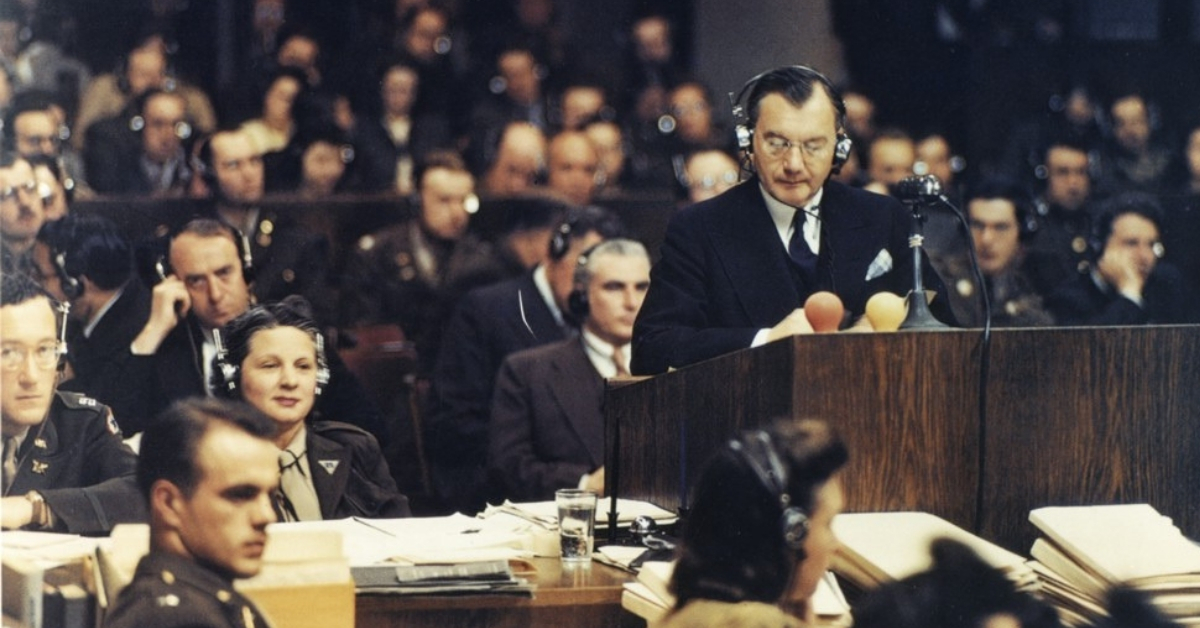The Nuremberg Trials in 1945, established that the infamous SS were responsible for most Nazi war crimes. The Wehrmacht, consisting of the army, navy, and air force, was more or less freed from such accusations. The reason the Wehrmacht was acquitted from war crimes lies in its structure.
Nominally, all branches of the German Army were under the control of the OKW; the Supreme Command of the Armed Forces. The prosecutors at Nuremberg did not to condemn the OKW as it deemed the supreme command had little influence on the ground or cooperation between the army, navy and air force.
The OKW ratified Hitler’s orders and was directly responsible for the consequences. Unlike the Gestapo, the SS and the SD which were deemed criminal organizations, the Wehrmacht was absolved from responsibility. Any Wehrmacht military personnel who stood trial, like Wilhelm Keitel and Alfred Jodl, were tried as individuals, and not as instruments of the military institution.
The Wehrmacht, therefore, considered themselves free of charges. The process was intended to pacify the German public, and it played a significant role in rebuilding the German state.
War crimes relating to the Wehrmacht were, in fact, coming from the top. Such was the jurisdiction given by the so-called Commissar Order. It gave the Wehrmacht forces clear instructions on executing the political officers and Jewish combatants of the USSR on sight for “enforcing the Judeo-Bolshevist ideology in military forces.”
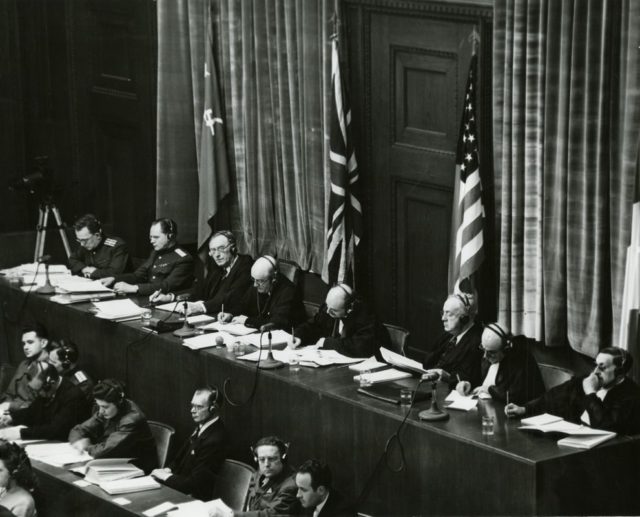
The treatment of Soviet POWs was in direct violation of the Geneva Convention, but as the USSR did not sign that treaty, Germany considered it was legal to deny all rights to Soviet prisoners. That argument is invalid as Germany did sign the Geneva Conventions and was obliged to treat the POWs accordingly.
The treatment of Soviet POWs was in direct violation of the Geneva Convention, but as the USSR did not sign that treaty, Germany considered it was legal to deny all rights to Soviet prisoners. That argument was invalid as Germany did sign the Geneva Conventions and was obliged to treat the POWs accordingly.
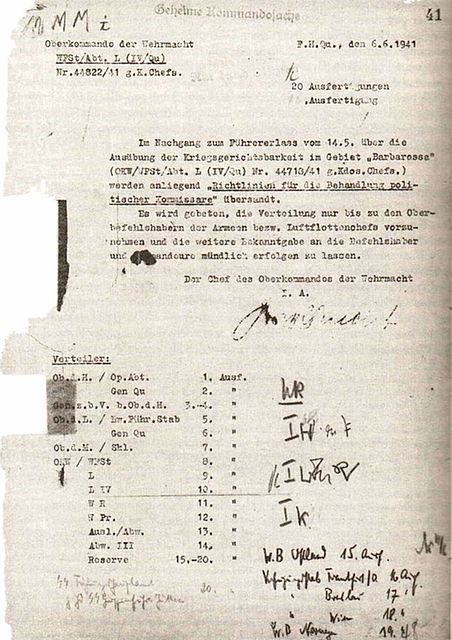
Hitler formulated the Order and issued it through the OKW. It was intended to turn the war against the USSR into a more ideological and racial discourse. It was perceived almost as a holy war, in which everything was justified to achieve victory.
In the period between July and October 1941, nearly 600,000 POWs in Wehrmacht custody were turned over to the SS to be killed. Those actions left some of the high-ranking officers in a moral dilemma, but the threat of defeat plunged them further into the abyss of bloodthirsty madness.
Together with the Commissar Order was another document that justified war crimes; the Barbarossa Decree. Put together by the Fuhrer; it declared the war against the Soviet Union was a war of extermination. Thus, the military was given the right to be the judge and jury in the occupied territories. Field Marshall Keitel issued the decree just before the invasion of the Soviet Union. It included the immediate execution of all suspected partisans or people who expressed any hostile attitude towards the occupying force. It also allowed the officers of the Wehrmacht to apply “collective responsibility” which meant shooting random civilians as a measure against rebellion.
Field Marshall Keitel issued the decree just before the invasion of the Soviet Union. It included the immediate execution of all suspected partisans or people who expressed any hostile attitude towards the occupying force. It also allowed the officers of the Wehrmacht to apply “collective responsibility” which meant shooting random civilians as a measure against rebellion.
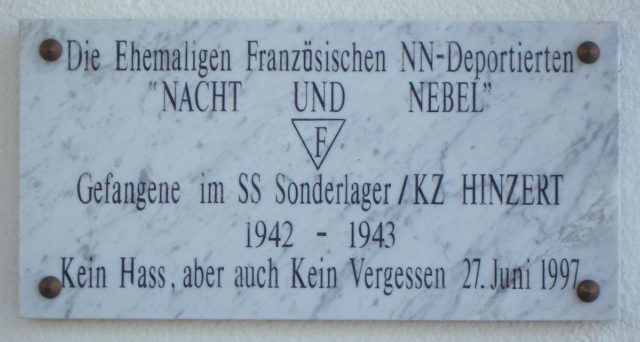
The Decree stated that German soldiers who committed crimes against humanity, the USSR and prisoners of war were exempt from criminal responsibility, even if they committed acts punishable according to German law.
The Decree was joined by yet another directive called Night and Fog. It further authorized the use of extrajudicial killings which included suspected helpers of the resistance in the German-occupied territories. It led to destroying whole villages in anti-partisan actions by the Germans in the Balkans and the occupied territories of Poland and the Soviet Union.
The Wehrmacht was indoctrinated to the idea that the Soviets were subhumans commanded by Jewish leaders who deserved no mercy. The racial hatred towards Slavs and Jews was combined into a propaganda poster of a Soviet and a German soldier. Many atrocities were committed on the grounds of creating the so-called Living Space (Lebensraum) for Aryans. Extermination and enslavement of local populations were part of the Reich’s official policy.
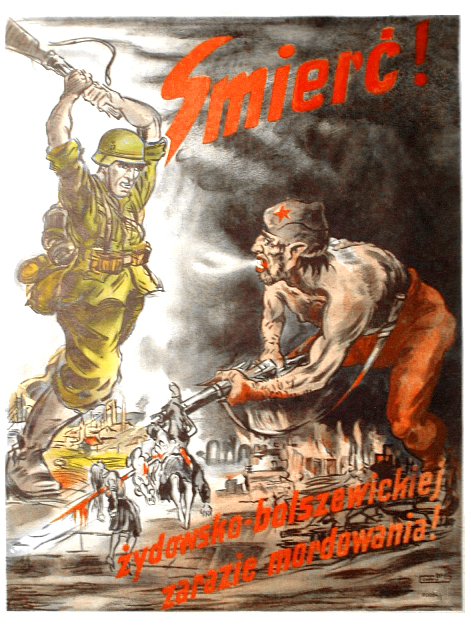
A law that forbade the “mixing of races” was supposed to serve as a prevention of rape, but the death penalty was applied to the victim, and not the perpetrator. It led to murders of women who were left pregnant by German soldiers. Among the most ruthless massacres relating to rape on the Eastern Front were the ones in Kerch, Lviv, and Smolensk. Today it is estimated that over a million children were fathered by German soldiers in Russia during the occupation, while the exact number of rape cases can only be speculated.
The Wehrmacht was also responsible for a network of brothels in which women and young girls were forced to serve the officers. The military leadership justified the brothels as a way of preventing venereal diseases and masturbation among their troops. Forced prostitution grew without interruption in the occupied territories of Poland, Belarus, Ukraine, and Russia.
The Nuremberg Trials did not prosecute anyone for rape or other sexual violence; rape was defined as a crime against humanity, but prosecutors deemed that such crimes had “no nexus to war.”
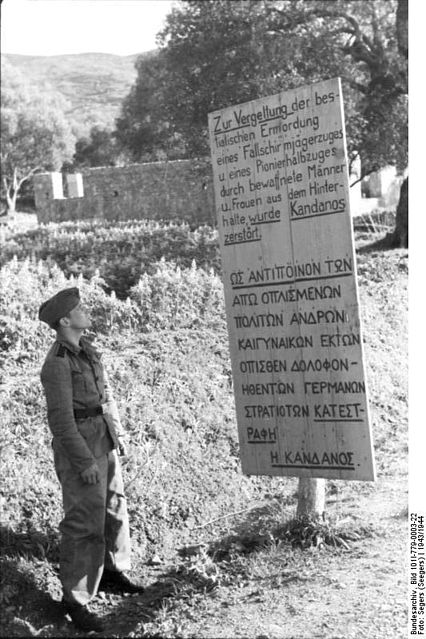
Although the SS was considered responsible for human experimentations in the death camps, the OKW and the Wehrmacht had full knowledge of the experiments and participated in many of them. They were pursuing development of biological weapons, typhus research, high altitude tests and the effects of freezing on the human body. All the experiments were conducted on POWs and Jews.
In the 1950s the Cold War was in full swing, and the trials came to a halt. The Wehrmacht amnesty led to the forming of the West German army, the Bundeswehr. It was necessary to continue the military tradition of the country while bypassing the atrocities committed during WWII.
Many known officers were again on the Geman general staff, as their experience was irreplaceable in coping with the growing threat of the Soviet Union after the war.
